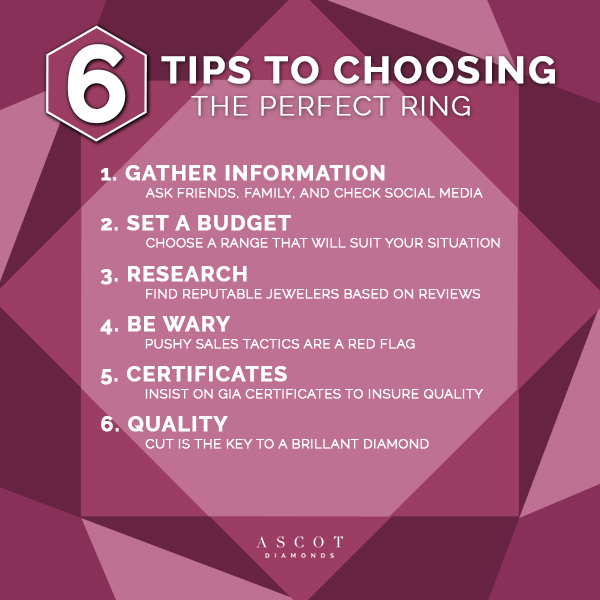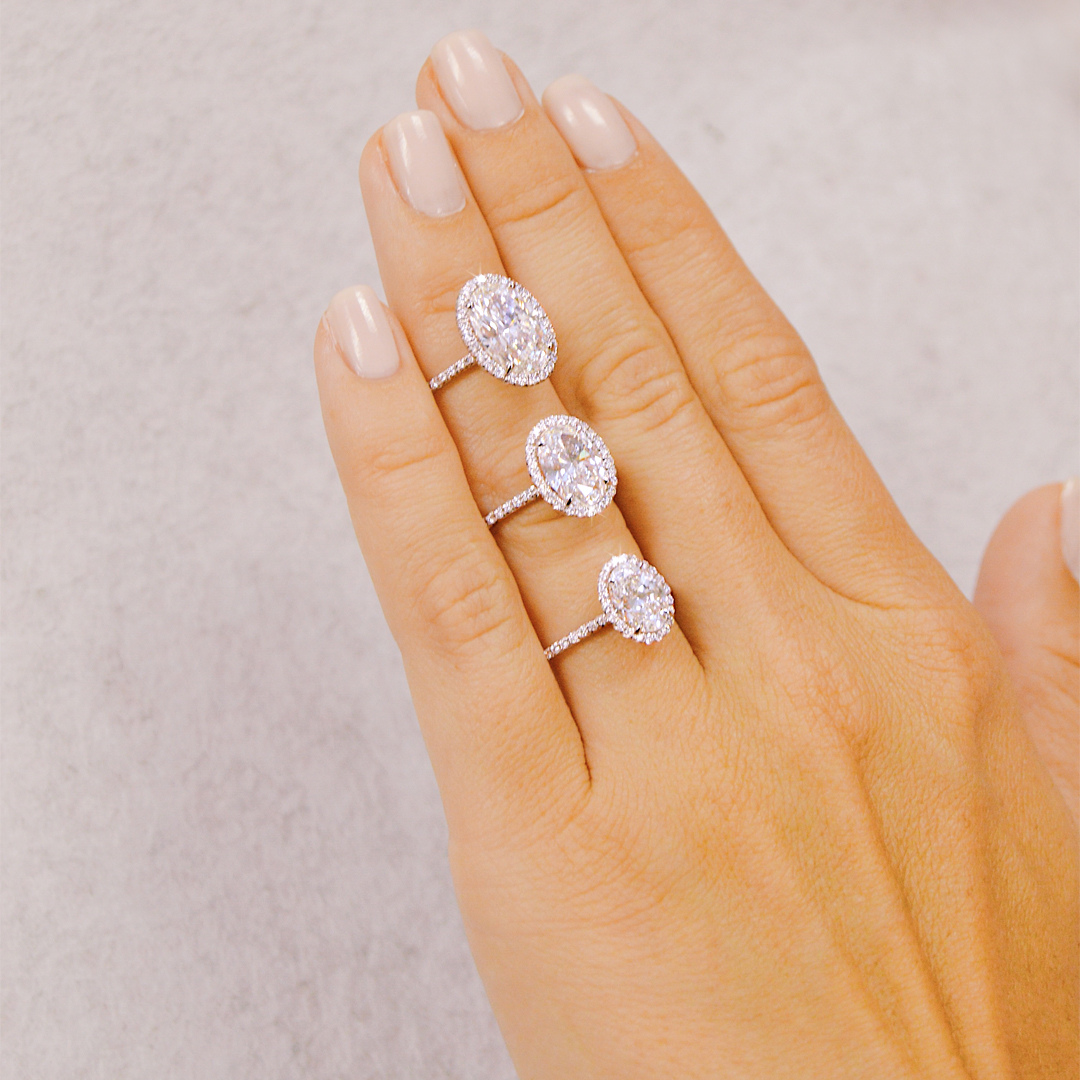Best Guide for Buying a Diamond
Best Guide for Buying a Diamond 
Buying a diamond can be intimidating for anyone. There are so many different shapes, qualities and vendors to choose from. One has to consider budget, carat weight and of course, the girlfriend’s expectations! On top of this, there are many different laboratories that certify diamonds, with a lot of misinformation to lead you astray. Here is some concise advice from a 22 year veteran in the wholesale diamond business who has seen the diamond buying process from every angle.
Let’s break the process down:
1. Gather information:
See what you can find out about her preferences. The two best sources for intel (if she isn’t the type who has already spelled out very clearly what she wants) is a best friend or family member, and any images you can find of diamonds or jewelry that she may have posted or tagged on a social media account like facebook, Pintrest, instagram, or cut out of a magazine (old school).
2. Set a budget:
Ignore commonly accepted advice about how much you should spend. This is a very personal decision and the answer will differ from one person to another. Do keep in mind that you have one shot at it, and while you don’t want to overextend yourself, you also don’t want to disappoint the bride.
3. Research:
Investigate local jewelers or diamond experts, paying close attention to the reviews. Read some of them and use your best judgment as to what environment may be the best fit for you. Criteria to base your decision on should be heavily weighted to experience, and expertise. Jewelers who don’t sell a lot of diamonds or have had limited experience handling and valuing diamonds, may not know why one stone with an identical laboratory report to another may be worth 30 or 40% less! While online sites try and attract you with price, almost all of them are ‘list selllers’, which means they will download inventories from diamond wholesalers, never having laid eyes on the stones. This is dangerous for the consumer who doesn’t have expert guidance. While the price may look good, it’s possible, if not likely, there are real problems with the stone that effect the value tremendously even if it is GIA certified. Lucky grades, black center inclusions, haziness, and small face for the carat weight are a few of the pitfalls. Having a good selection of diamonds so you can compare stones side by side will be a big help. It is very difficult to understand how one color or one clarity grade will look without a direct comparison, and an expert to guide you. You will also see differences in the way a stone is cut, particularly if it is not a round. All other shapes in our industry are called fancy shapes, and despite the name, they are generally less expensive than a round. I say generally because some shapes will show flaws more readily (like an emerald cut or asscher cut), and some will show more color than a round at the same grade (like oval, cushion, marquise, radiant, princess and pear shape), so you may have to go better in color or clarity to get a similar look and the dollars can end up the same.
4. Be wary:
Pushy tactics or pressure to leave a deposit before you are ready are bad signs. That usually indicates that the seller is afraid of you walking out and comparing the product or shopping experience somewhere else. Ascot Diamonds is a professional diamond company with confidence in their product, experience and their value proposition will not need to resort to that.
5. Certificates:
Even two diamond reports from the GIA, which is arguably the strictest and best respected laboratory in the industry, can vary enormously in value. This is why you really need to find someone who knows diamonds very well, and educates you accordingly. When you start comparing different laboratories, it gets even more complicated. AGS, IGI, HRD, IGL, and AGL are just a few of the other labs. You may have read some press about EGL. They are a laboratory that is in the process of re-structuring because the different laboratories had tremendously different grading standards which created confusion. The EGL labs in the USA are the strictest of the bunch, but still tend to be a touch more lenient on the grading than the GIA. To be clear, going with GIA does not guarantee you a better value or brighter diamond than any other certificate, and that is why you MUST find an expert to guide you.
6. Quality:
An Ascot Diamonds experienced diamond vendor will no doubt explain that better color and better clarity (what most people think of when discussing diamond quality) does NOT give you a brighter diamond, contrary to popular belief. A whiter diamond has less yellow in it, but that does not result in a more brilliant diamond. It is simply whiter. And going with a higher clarity (fewer flaws in the diamond) ALSO doesn’t mean the diamond has more sparkle or luster (assuming you are not at I1 or I1 clarity which has enough inclusions to be obviously visible to the naked eye). The brilliance comes from only two things. First the diamond must be a crisp, bright crystal from when it was formed millions of years ago. The second factor is quality of the cut. The diamond cutter has to cut for brilliance, not for weight as many diamonds are, and must take time planning the shape and polishing. The polish and symmetry grades on a diamond are relevant, but also be careful not to ready too much into it, particularly with fancy shapes. While you may get an ‘Excellent’ grade on symmetry of an oval cut diamond for instance, all that means is that the facets line up symmetrically. It does not necessarily speak to the brilliance or desirability of the stone. The ratio of the length to width, crown and pavilion angles, girdle thickness, table size and many other nuances contribute to the personality of the stone.
This should cover the basics. Most importantly, try and enjoy the process. If you are in the right hands, it should be fun!
